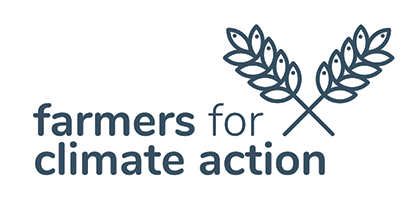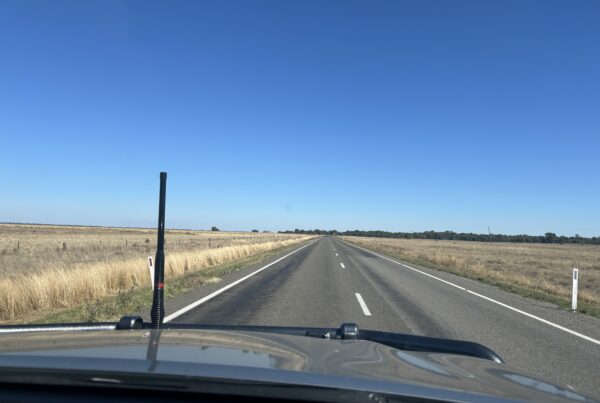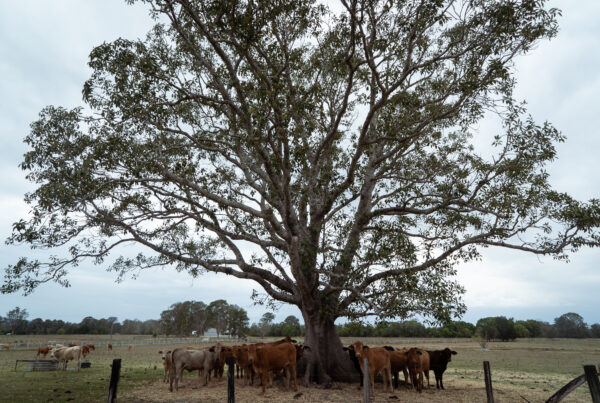February, 2023
How should the PRF best be delivered with a regional focus?
We need to urgently provide the investment needed to support the regions as they drive the shift to a low carbon, clean energy future, and we must also ensure that it is not a bureaucratic process that is inflicted upon farmers and farming communities, rather than them being active participants.
As stated, the fund will work in conjunction with a number of extant bodies and funding organisations. Coordination between bodies is necessary to ensure there is no duplication of work.
Leveraging the expertise and capacity of local governments to both support the development of projects, as well as working with the local community to scope new projects for could help negative some of the problems with the regions having policy ‘imposed’ upon them, while also ensuring it isn’t an overly burdensome of bureaucratic approach from the federal government.
If any regions are to be prioritised, what factors should be considered?
- Industry and existing interest in decarbonisation
- Local grassroots organisations leading the work (ie, Totally Renewable Yackandandah and other groups across the country that are working on projects to decarbonise their communities)
- Socio economic factors (ie, Hepburn Shire Council may have a number of good projects, but it is also a relatively high income area already and support should be given to lower income LGAs)
- Workforce considerations – ability to supply and support
What is the best way to design and deliver support within any prioritised regions, or otherwise achieve the objective of regional transformation?
Firstly, we would recommend opening it up to all rural and remote regions in Australia. Too often funding approaches and policy are overly targeted to ‘impacted’ regions (ie, Latrobe Valley, Hunter Valley etc). The combined impacts of urbanisation, climate change and shifting economic circumstances is impacting the vast majority of regional and remote Australia.
At the same time, the new energy economy offers opportunities for all of regional Australia to embrace new energy opportunities and investment. Good policy design at the beginning can help ensure ongoing returns for communities.
As covered in our Farm Powered report, the most direct way for regional communities to gain a sense of ownership over renewable and clean energy developments is by becoming co-owners or co-investors in the project.
Under a co-investment model, the community owns some part of the profit associated with the renewable energy development, but does not have any decision-making power or control over the operation of the asset. Co-ownership involves more direct control as the community ownership allows an active role in decision making. Co-ownership allows participants to generate income from the asset, develop skills and capacity locally and build long-term trust with the community. In Europe, co-ownership and community co-investment are much more common than they are in Australia. In Denmark in 2011, the Danish government mandated new wind farms must be at least 20% community-owned. In parts of Europe this model has proved very successful and popular with local communities. For example, in 2013, 46% of Germany’s 63 GW of renewable energy was locally owned.
There are many benefits of co-ownership, including:
- allowing generation of income that can be re-invested locally;
- providing jobs, training and business opportunities;
- reversing economic decline of an area by attracting investment;
- allowing better stewardship of local assets because the community owns and uses them;
- instilling a renewed sense of pride and confidence in the community; and
- providing local people with a meaningful stake in the future development of the place in which they live and / or work.
Is there an approach to funding that will best allow the PRF to be accessible to the depth and breadth of industry across Australia?
If funding is to be provided through grants, after an initial round, support grantees with funding to hire a grant writer to help them pull the project together. It ensures good projects are not missed because of low capacity or experience writing grants.
Leverage state and local government to support the funding of projects.
In agriculture, leverage and support farming representative bodies to develop resources which in turn support farmers (who are running small to medium businesses with low margins) to access funding. Some individual farmers will find it difficult otherwise to access programs, grants, and funding.
Do you have any concerns over recipients being required to monitor performance and report publicly on project outcomes (including total abatement achieved)?
Ensuring accountability is an important component of good policy. At the same time, overly onerous reporting requirements can be off putting for smaller organisations, farmers and other groups who may be interested in engaging with the scheme but are concerned about being able to accurately report back.
Consistency of monitoring and reporting of abatement and outcomes should be supported by Government to minimise ‘red tape’ for farmers across the many programs and projects they may be reporting into (including to financers and banks, trading partners, and government programs). Government has a role to play in setting consistent standards and parameters.
Should there be limits to the total funding any project, region or sector can receive?
Sensible limits strike a balance between the entire fund being invested in a couple of projects and failing to give sufficient funding to the good projects to have them be really effective.
Safeguard Transformation Stream (STS) Questions
What factors beyond emissions reduction should be considered when assessing STS projects?
We would suggest the following may be considered in assessment and impact, to ensure rigorous and genuine lasting emissions reductions
- Social and environment factors, including biodiversity
- Local or community ownership or investment models
- Social enterprise models delivering benefits to local or affected communities
- First Nations community/ies’ input and collaboration
- Prioritise organisations that put a premium on using Australian materials
Should STS grants be open to individual facilities only, or should facilities be able to submit a joint application? For example, to jointly develop common use infrastructure.
Joint applications should be able to be submitted
Should there be any exceptions to the proposed joint contribution funding model for STS grants?
No.
Industry Decarbonisation Stream (IDS) Questions
Should the IDS support both capital and non-capital investments?
N/A
Does a matched funding model work for the IDS? Should there be any exceptions?
N/A
Should the IDS offer grants or another type of financial incentive?
N/A
Would multiple, targeted rounds of funding support project development?
N/A
Would the development of IDS sub-streams benefit project development?
N/A
What assessment criteria should the IDS use to select projects?
N/A
Should support for the development of clean new energy industries be targeted towards specific sectors, regions or stages of technology development?
N/A
How can the PRF complement existing funding for clean energy industries?
N/A
What types of financial support should the PRF offer to support new clean energy industries? For example, grants, tax deductions, equity, concessional loans, subsidies, etc.?
N/A
How should the impact of PRF support for new industries be measured and assessed?
N/A
What are your challenges when it comes to the workforce development?
N/A
How should the PRF support workforce development?
N/A
How should workforce development impacts be measured and assessed?
N/A
General Comment
Farmers for Climate Action represents more than 7500 farmers and 35,000 supporters, located across Australia.
We engage the farmers across our network to guide our policy work. In a recent survey of those farmers, we found that overwhelmingly farmers would make climate-smart changes on their farm if they were supported to do so. Currently, there is a lack of readily available programs that are trusted, credible and practical.
At the same time, Australia’s public and private sectors are making much-needed investments as we shift from an energy system powered by coal, oil and gas to one powered by renewables and storage. These critical investments will power more industries and communities, creating hundreds of thousands of jobs in rural and regional areas as Australia significantly reduces emissions over coming decades.
Nationally, the imperative to rapidly deploy renewables is clear. This is key to achieving the deep emissions reductions we need to limit climate change impacts, protecting the future of farms and food security. It is crucial we capitalise on the huge opportunities at farm and regional level. We believe that Powering the Regions Fund could help fill that gap. Here are some of our key priorities:
1. Provide investment and mechanisms to support mitigation and adaptation solutions for specific commodities as well as the sector as a whole through the Powering the Regions Fund, including :
- Increased funding specifically for research, development, commercialisation and knowledge sharing of:
- Emissions reduction technologies and land management practices, particularly for difficult to abate gases such as nitrous oxide and methane;
- Adaptation strategies to support farmers to future proof production and maintain commercial viability.
- Support for farmers to invest in emissions reduction technologies and initiatives that are cost prohibitive, such as through an instant tax asset write off.
2. Fund a practical, long term on-farm extension program to enable producers to understand, measure and reduce on-farm emissions. This should utilise the existing network of extension providers, including RDCs, state governments, drought resilience hubs, Landcare networks and farmer led groups. This program could be similar to the Victorian On-Farm Action Plan Pilot or leverage the work underway in the Carbon Farming Outreach Program.
3. Commit funding from the Powering the Regions Fund to address the high capital costs of on-farm renewables and increase knowledge sharing by:
- Introducing renewable energy incentives for farmers, supported by a national energy audit program, to increase rapid uptake on farms and reduce input costs.
- Subsidising on-farm batteries making them financially viable by reducing payback periods.
- Establishing an agricultural program within the Australian Renewable Energy Agency (ARENA) to fund demonstration and knowledge sharing projects for renewable energy and battery solutions on farm.
Resilient landscapes and ACCUs
We note that one of the key focus areas for the Powering the Regions Fund is ‘purchasing carbon credits’.
Farmers manage more than 50% of Australia’s landmass, making them the stewards of a significant proportion of natural resources. These resources provide huge social, economic, cultural and environmental value, recognising this and valuing it is integral to a thriving agricultural sector. It also means that farmers will be some of the main providers of carbon credits under the scheme.
As the Government is utilising natural capital markets as a key policy mechanism for addressing climate change and biodiversity, the Government must ensure these markets are operated with integrity, transparency and good governance, overseen by a genuinely independent body. These markets should not be used to continue harmful emissions and biodiversity losses by providing cheap offsets that rely heavily on false equivalencies. Nor should they be used to shift the burden of emissions reduction onto farmers and the land sector.
We don’t believe that the Safeguard Mechanism should allow 100% of emissions reductions to be met through offsets.
Recommendations to increase opportunities for farmers to enhance natural capital resources and ensure the integrity of the scheme:
4. Invest in existing systems, such as NRM Regions, to employ a network of dedicated natural capital extension officers to:
- support farmers to understand baselines and options for their property;
- work with farmers to determine which schemes or approaches, if any, would work for them;
- optimise project co-benefits, such as biodiversity, water quality and social and cultural outcomes;
- increase participation in carbon farming;
- support alignment of carbon farming projects with regional NRM plans;
- support reviews and development of methods under the Emissions Reduction Fund to ensure continuous improvement and integrity.
5. Commit to fully funding the finalised National Soil Action Plan to ensure the health of the natural resource all farmers rely upon is prioritised.







